By Randy Myers
Understanding your customer has long been critical to business success. At the 2025 SVIA Spring Seminar, understanding retirement plan sponsors got a little easier when three of them shared their insights on stable value funds, money market funds, managed accounts, retirement income products, recordkeeper relationships, and the challenges of helping plan participants reach their retirement goals.
Jamey Toland, managing director of liability-hedging assets at Boeing Co.’s Trust Investments Group; Bryan White, senior manager, pension investments, at RTX Corp.; and Richard Scheer, executive director at the Cultural Institutions Retirement System, all confirmed their organizations offer stable value funds as investment options. In a message welcomed by the audience of stable value providers, both Toland and White emphasized their organizations have no plans to offer a money market fund option—stable value’s most direct competitor—to their investment menus.
“We’re not going to do that,” Toland stated firmly. “Over the long run—the time horizon we use to evaluate options we offer within our 401(k)—stable value has outperformed.”
Scheer noted that while his organization’s board of trustees is considering adding a money market fund to ensure participants always have optimal options available in any market environment, he anticipates that a traditional equity wash rule would limit its use. This rule prevents participants in a defined contribution plan from moving money directly from a stable value fund to a money market fund.
“We’ve had some conversations with the people who want the money market in the plan,” Scheer explained, “and we say, ‘I don’t see how it’s going to help,’ because you’ll have people moving from the money market into stable value, but they can’t do the opposite.”
All three sponsors confirmed their plans offer managed accounts, though participant adoption rates vary significantly. Boeing enjoys high uptake despite fee concerns. At the Cultural Institutions Retirement System, only about 15% of participants use managed accounts, while White didn’t have specific utilization data for RTX.
The sponsors acknowledged increased cash flows into stable value this year, likely in response to market turmoil triggered by President Trump’s trade tariffs, though not at levels seen during previous financial crises.
Regarding qualified default investment alternatives (QDIAs), Boeing and the Cultural Institutions Retirement System offer only target-date funds, though Boeing provides an out-of-plan annuity option that garners minimal participant interest.
RTX took a different approach, introducing a lifetime income product as its QDIA in 2012. This product functions as a standard target-date fund until age 48, when the plan begins purchasing annuities for the participant, reaching full annuitization at 65. Recent modifications allow participants to specify annuitization percentages from 0% to 100% in 10% increments, with the option to withdraw all funds if their circumstances change.
Both Boeing and RTX actively encourage participants to remain in their workplace plans after leaving the company, arguing that larger asset bases enable better vendor pricing negotiations, among other benefits. Inactive participants comprise approximately 35% of all participants at Boeing, 43% at RTX, and 50% at the Cultural Institutions Retirement Center—though the latter doesn’t actively encourage retention.
Regarding hardship withdrawals, White reported a fourfold increase at RTX since 2020. Toland confirmed an uptick at Boeing as well, potentially influenced by last year’s significant workforce reduction at the company. Scheer indicated his plan doesn’t permit hardship withdrawals.
The sponsors expressed mixed views on recordkeeper relationships. Both Toland and White voiced frustration about obtaining detailed participant behavior data.
“I am constantly surprised at the level of granularity we cannot get,” Toland remarked.
White agreed: “It can be difficult to get participant data in a digestible format.”
While Toland and White reported no significant issues with recordkeepers encouraging rollovers into directly managed accounts, Scheer mentioned his plan had experienced—and quickly addressed—such problems.
Panel moderator Jessica Cole, head of stable value wrap contract management for Invesco, asked the sponsors about their concerns regarding plan participants.
Toland’s primary worry is insufficient savings rates, with some employees not maximizing Boeing’s generous 10% salary match. White worries about older RTX participants not utilizing newer plan features like auto-escalation of their contributions and engaging in excessive trading. Scheer expressed disappointment that 80% to 85% of newer employees don’t participate in the 401(k) plan. He attributed this to their enrollment in the organization’s defined benefit pension plan and the elimination of matching employer contributions.
When Cole asked about challenges in delivering positive retirement outcomes, Scheer highlighted the ongoing struggle to educate participants about stable value funds’ complexity and benefits.
Toland expressed concern that stable value utilization rates and assets continue to shrink as younger participants predominantly invest in target-date funds that exclude a stable value component, and distributions outpace contributions to the fund. Even in collective investment trusts that can include stable value funds, fees present obstacles.
” Wrap provider fees continue to be a focus point during expense reviews with our investment committee,” Toland confessed. While Toland can justify these expenses, the questions arise consistently. “So if we can do anything about those fees…” he suggested, leaving the thought unfinished.
While wrap contracts remain fundamental to stable value funds’ value proposition by guaranteeing participants can withdraw their money at contract value, barring plan-related events, Cole acknowledged these fee concerns as a “real challenge” for plan sponsors.

